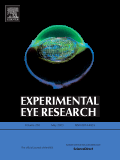
“The phenomenon of functional selectivity, whereby a ligand preferentially directs the information output of a G-protein coupled receptor (GPCR) along (a) particular effector pathway(s) and away from others, has redefined traditional GPCR signaling paradigms to provide a new approach to structure-based drug design.
The two principal cannabinoid receptors (CBRs) 1 and 2 belong to the class-A GPCR subfamily and are considered tenable therapeutic targets for several indications. Yet conventional orthosteric ligands (agonists, antagonists/inverse agonists) for these receptors have had very limited clinical utility due to their propensity to incite on-target adverse events. Chemically distinct classes of cannabinergic ligands exhibit signaling bias at CBRs toward individual subsets of signal transduction pathways.
In this review, we discuss the known signaling pathways regulated by CBRs and examine the current evidence for functional selectivity at CBRs in response to endogenous and exogenous cannabinergic ligands as biased agonists. We further discuss the receptor and ligand structural features allowing for selective activation of CBR-dependent functional responses. The design and development of biased ligands may offer a pathway to therapeutic success for novel CBR-targeted drugs.”








